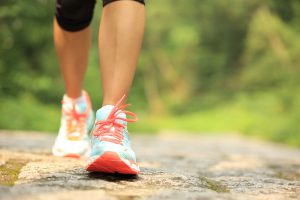The Health Risk of Varicose Veins
 Varicose vein issues affect many of us in the US. In fact, 70% of women and 40% of men experience the effects of varicose veins by the age of 60. While it’s not common, the side effects can include pain, discomfort, and dark-purplish threads down your leg. By understanding the contributing factors, you can work to minimize the effects while we work to treat your varicose veins.
Varicose vein issues affect many of us in the US. In fact, 70% of women and 40% of men experience the effects of varicose veins by the age of 60. While it’s not common, the side effects can include pain, discomfort, and dark-purplish threads down your leg. By understanding the contributing factors, you can work to minimize the effects while we work to treat your varicose veins.
Symptoms of Varicose Veins
Varicose veins are not strictly a cosmetic issue. The most obvious symptoms include skin ulcers and discoloration in your legs. You might also experience a feeling of heaviness, aching, swelling, or cramping when you are going about your daily activities. More severe and painful symptoms can include burning or throbbing, and in some severe cases, blood clots can occur.
Causes of Varicose Veins
Varicose veins are a type of vein disease caused by damaged or weak veins, which allow your blood to flow backward in your legs. The blood can pool in your vein, creating dark-purplish discoloration and progressive pain and discomfort.
Risk Factors of Varicose Veins
Of course, risk factors like age, gender, job type and function, obesity, and even family history can contribute to your varicose veins. With the increase of blood flow and hormonal changes during pregnancy, you’re more likely to experience enlarged veins, which can lead to varicose vein issues.
Complications of Varicose Veins
Varicose veins are not uncommon, but you may experience complications like ulcers, blood clots (thrombophlebitis), and even bleeding issues where the vein may burst and require medical attention. As medical professionals, we can help you to understand why these complications are happening so you can avoid them in the future.
How Lifestyle Choices Affect Varicose Veins
Varicose veins may be a part of your life that you will continue to deal with, but awareness and healthy lifestyle choices can make a huge difference in how they affect your life. We recommend you exercise to improve your muscle tone and circulation, but eating a low-salt, high-fiber diet can also make a difference.
Beyond watching your weight and exercising, you can avoid wearing high heels and tight nylons. If you lead an inactive lifestyle with long hours of standing at work, start moving! But, also take care of yourself. At the end of a long day, put your feet up. Remember, we are just a quick phone call away with more tips, ideas, and suggestions.
Call us at 425-277-8346 (VEIN) to Schedule Your Appointment Today!